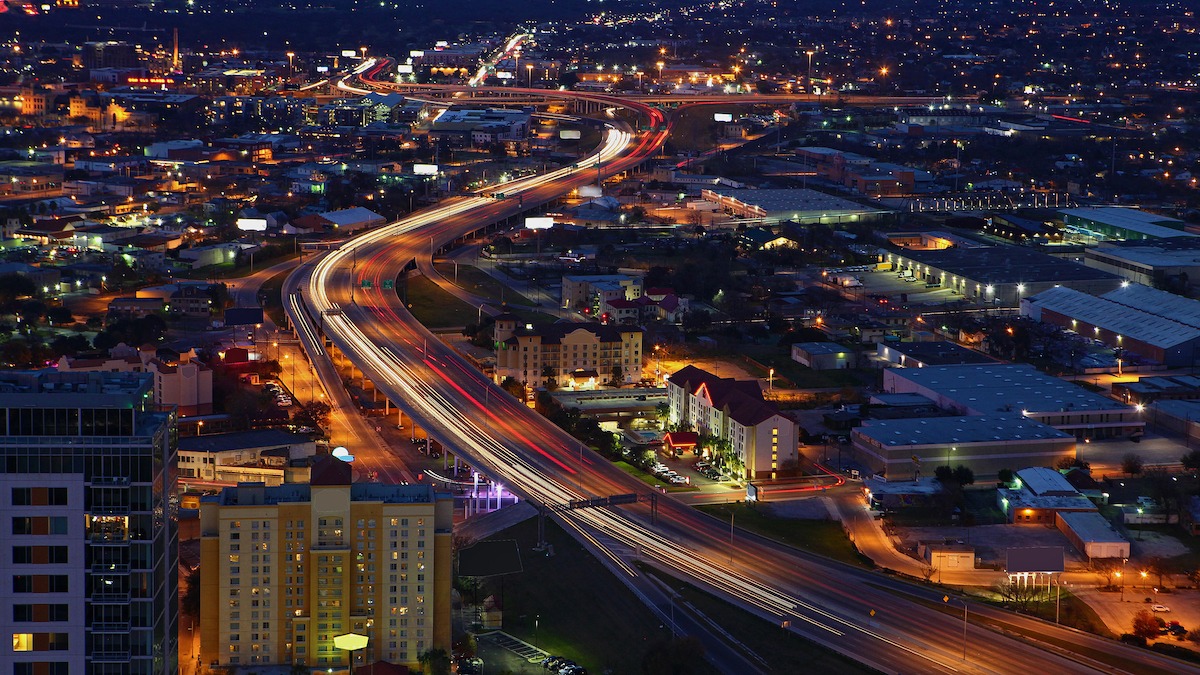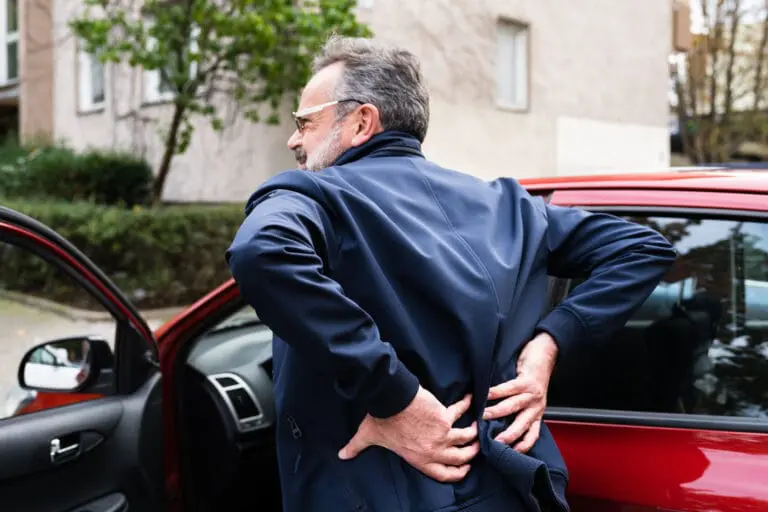Driving in Texas is no joke, especially in San Antonio. Whether you’re going down Loop 410 or navigating the chaos on Culebra Road, the risk of a crash is always present. And these San Antonio accident statistics show just how dangerous certain stretches of road can be. Understanding these trends isn’t just for data nerds. It’s about staying safe.
In this article, we go over 35 key statistics and trends about San Antonio car accidents. You’ll find out which roads are the most congested, what times of year see the most wrecks, and what types of injuries are most common. Whether you’re a daily commuter, a weekend driver, or new to the area, this data helps you make smarter decisions on the road. It’s a real-world guide to driving safer in and around San Antonio, Texas.
San Antonio Accident Statistics: the City’s Most Dangerous Roads
When it comes to car accidents in San Antonio, where you drive matters just as much as how you drive. Certain roads and highways in the city consistently see higher crash rates due to congestion, high speeds, and poor roadway design. Recent data highlights just how risky some of these Texas routes can be…
- From a recent study done by Texas A&M, car traffic counts for 1,800 roads and highways in Texas based on data collected by the Texas Department of Transportation. Researchers then created a list of the 100 most congested roads in the state. The list of the 100 most congested roads in Texas included 10 roads and highways in San Antonio. (Source: Texas A&M)
- 27th Most Congested Road in Texas: Charles West Anderson Loop 1604, from US 281 to I-10
- 31st Worst Traffic in Texas: Interstate 35, from Loop 1604 North to Connally Loop NE
- 43rd Most Congested Road in Texas: I-35, from Connally Loop NE (410) to Connally Loop E (East 410)
- 49th: Loop 410, from I-10 to US 281
- 50th: I-35, from Charles West Anderson Loop (SL 1604) to Natural Bridge Caverns Road
- 60th on the List: Charles West Anderson Loop 1604, from Braun Road to I-10
- 83rd: Pan Am Expressway (I-10, I-35), from US 87 to I-37
- 84th: Connally Loop North 410, from I-35 to US 281
- 96th: Bandera Road, from Loop 410 to FM 1560
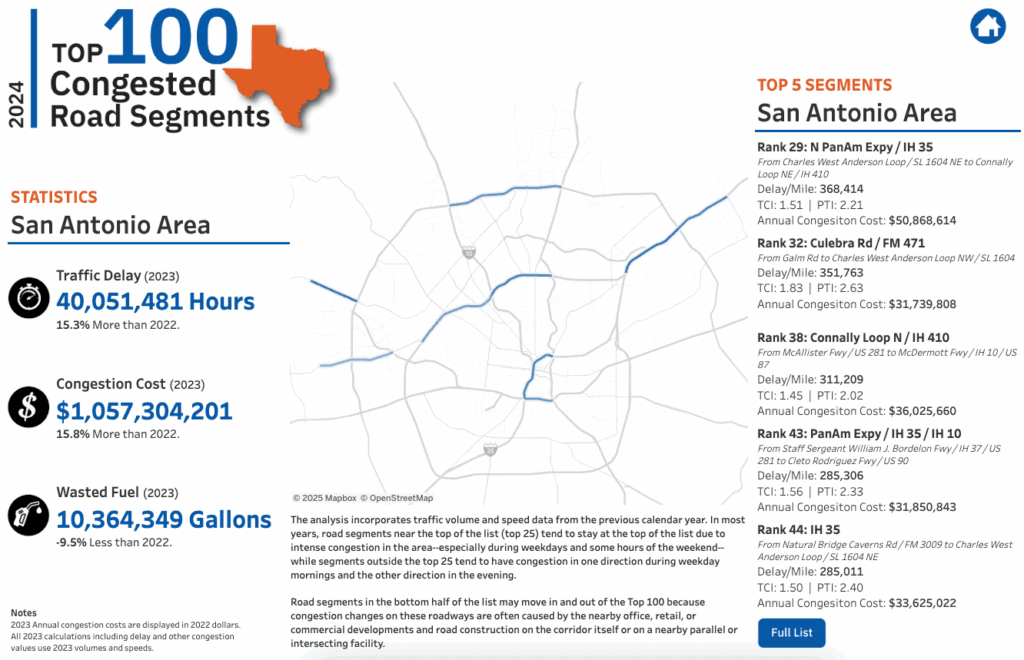
- However, take the #1 spot is San Antonio’s Culebra Road as the worst area road. It ranks 21st statewide, and is the deadliest road in San Antonio. (Source: Texas A&M)
- Data from the TxDOT shows that from 2012 through 2022, 48 of the 700 fatal crashes in San Antonio recorded by state officials were on Culebra Road.
- The San Antonio Express-News reported the number of fatal crashes on Culebra has nearly doubled that of the second and third deadliest streets in San Antonio (South Zarzamora and San Pedro).
Potential Injuries from Car Accidents in San Antonio
Culebra Road cuts through the heart of San Antonio, connecting neighborhoods, shopping centers, and everything in between. But with seven busy lanes and drivers often speeding through, it can feel more like a highway than a city street, making accidents and injuries all too common.
Whether or not your daily commute takes you through Culebra Road, the chances of getting into a wreck are high in San Antonio. But what are the potential types of car accident injuries? Let’s take a look at those along with the most common types of wrecks we find:
- Out of the 40,077 total crashes and injuries in San Antonio recorded by TxDOT during 2023 there were:
- 160 were fatal crashes (with 164 total fatalities)
- 536 reported injuries in serious accidents
- And another 7,275 injuries reported in minor crashes
- Looking at crash injuries in San Antonio, Texas by age group reveals a consistent pattern of higher injury rates in the 25–34 age group and a fairly steady decline among older groups:
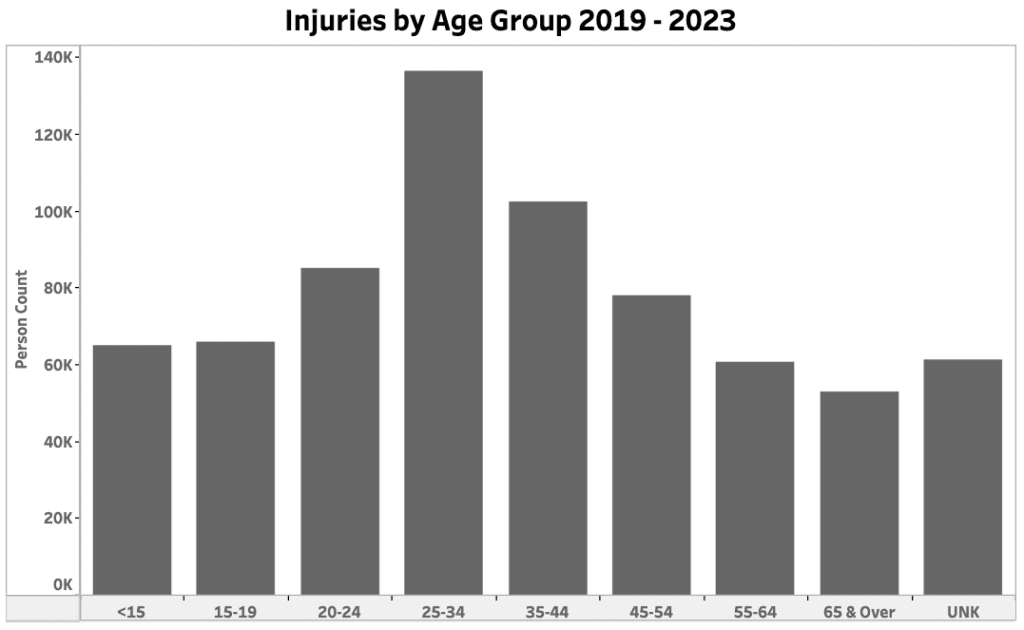
Source: Texas Open Data Portal
With that in mind, it’s important to understand that certain injuries are more common in car wrecks than other ways people get injured. Unlike slips, falls, or sports injuries, car crashes often involve sudden, high-impact forces that jolt the body without warning. (To learn more about this, read our guide on Mechanism of Injury.) That’s why certain injuries, especially those affecting the neck, spine, and surrounding soft tissues, are far more common after a collision.
Here are some of the most common injuries we see across all ages at our pain injury clinics in San Antonio:
- Whiplash: A soft tissue injury caused by the rapid back-and-forth motion of the neck during a collision—common in rear-end crashes.
- Herniated Disc: The force of a crash can compress or shift the discs between vertebrae, leading to pain, numbness, or weakness along the spine.
- Concussion: Though not a spine injury, head trauma from hitting the steering wheel, window, or headrest is common and can affect balance, memory, and focus.
- Lower Back Injuries: Lumbar strain, disc injury, or joint inflammation often result from seatbelt tension or force transmitted through the seat.
San Antonio Car Accident Report: Top Factors
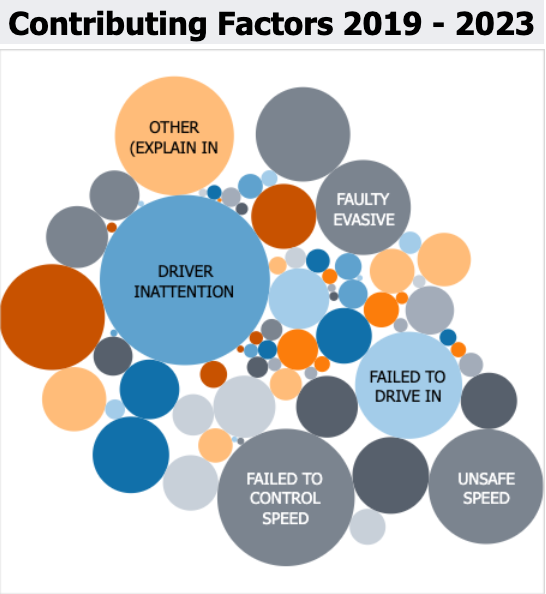
Source: Texas Open Data Portal
The graph above highlights the most common contributing factors to car accidents in San Antonio between 2019 and 2023, based on data from Texas Open Data Portal. Each bubble represents a contributing factor, with larger circles showing how often it appears in local crash reports.
As you can see, driver inattention, speeding, and impaired driving are among the top causes of wrecks across the city. Let’s break down some of the key trends shaping San Antonio’s accident data:
- Distracted Driving: According to TxDOT’s most up-to-date data, in 2023, distracted drivers accounted for 18,549 car accidents in Bexar County, which is 46% of total wrecks. Of these, 43 resulted in fatalities.
- Impaired Driving: According to TxDOT, Bexar County (home of San Antonio) is one of the top counties for DUI-involved crashes, with 1,840 car accidents reported in 2023. That’s nearly 600 more car accidents than in Travis County! (See the map below for a closer Texas county-by-county look.)

Source: TxDOT
- Seasonality: Based on the 2023 crash data from the TxDOT, the high season for car wrecks in Texas occurs during the summer months, particularly June through September.
- These months consistently report higher numbers of fatal crashes and fatalities. For instance, both June and August each recorded 390 fatalities, making them the deadliest months of the year.
- Speeding: Driving over the speed limit might seem hard to do in a state with 85 MPH signs on the interstate, but nearly 21% of San Antonio accidents are a result of speeding. Source: TxDOT
- Work Zones: In, and around Bexar County, work zones play a contributing factor to the high number of car accidents. TxDOT reported that in 2023, 3,044 crashes occurred in these zones, leading to 11 fatalities and 41 serious injuries.
What to Do If You Are in a San Antonio Car Accident
If you’ve been in a car accident in San Antonio or anywhere in Texas, whether it’s a major collision or a minor fender bender, there are a few important steps to take.
- First, check for injuries and get medical help right away, even if you feel fine.
- Then report the accident to local authorities and gather as much information as possible, including driver details and photos.
- Finally, don’t skip follow-up care. Injuries like whiplash or disc problems can, and often do show up later.
San Antonio roads are busy and not getting easier to drive. With tens of thousands of car accidents reported in Texas each year, it’s important to stay alert, drive smart, and know what to do when accidents happen.
Here to Help You Recover After a Car Accident
At Pro-Care Medical Centers, we’re here to support you after a wreck. Our team of car accident doctors and personal injury specialists will create a custom recovery plan to help you heal and support your claim. We’ve helped thousands of Texans recover after crashes, and we’re ready to help you too.
